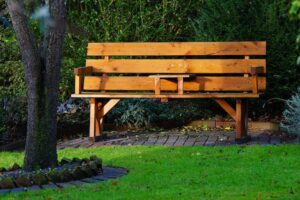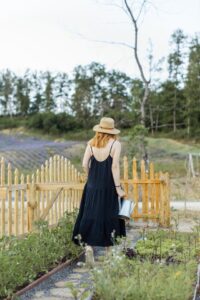 Of course, a small garden is not enough to fully satisfy your needs for appropriate products. Still, you can grow, for example, delicious tomatoes, beautiful eggplants or a large amount of herbs. If the space that can be allocated for a vegetable garden is limited, then think about which vegetables you can buy fresh without any problems and which ones you don’t have enough of or which ones you love the most.
Of course, a small garden is not enough to fully satisfy your needs for appropriate products. Still, you can grow, for example, delicious tomatoes, beautiful eggplants or a large amount of herbs. If the space that can be allocated for a vegetable garden is limited, then think about which vegetables you can buy fresh without any problems and which ones you don’t have enough of or which ones you love the most.
Compact varieties
If you want to plant giant Oxheart tomatoes or sweet corn in your small garden, then, due to limited space, you are unlikely to have much room left for anything else. But you can choose varieties bred specifically for growing in a small area – their names usually contain words indicating a small size. Just because a plant grows small does not mean it produces small fruit or that its yield is low.
As a rule, when purchasing seeds and seedlings, the adult size of the selected plants is known, taking into account that you can estimate the future location of plantings and their maximum possible number. Most likely, you, like most gardeners, will want to plant as many plants as possible so that later, if necessary, you can thin them out. This is one way to get a high yield from a limited area, but it is not the best.
If you really have little space at your disposal, then plant vegetables between the flowers – nowhere does it say that you can’t do this. This planting arrangement makes harvesting somewhat more difficult, but many vegetable plants look beautiful and can act as ornamentals, while the flowers will attract more pollinators to them.
Climbing plants
If you want to get a greater variety of fruits in your garden, then, in addition to compact varieties, pay attention to climbing plants that can be planted on supports. For example, climbing beans and climbing cucumbers take up less space than their bush counterparts.
Planting companion plants
Reducing pest infestation is often cited as the main benefit of planting companion plants together, but it also saves space. Shade-tolerant plants benefit from being planted near taller crops. Basil does not like the hot sun and feels great next to tomatoes. Lettuce will grow successfully all summer in the shade of almost any taller plant. Early vegetable crops such as spinach, radishes and peas can be planted next to slower-growing crops such as broccoli or peppers, which will begin to take over after the spring harvest.
Sequential landing
The succession planting method is suitable for both large and small gardens, but its benefits are more important when space is limited. This method consists of re-seeding fast-growing crops every two to three weeks during the growing season. It is especially useful for plants such as beans, squash and lettuce, which tend to become depleted quickly. By using the succession planting method, you can produce enough to meet your family’s needs all summer long.
